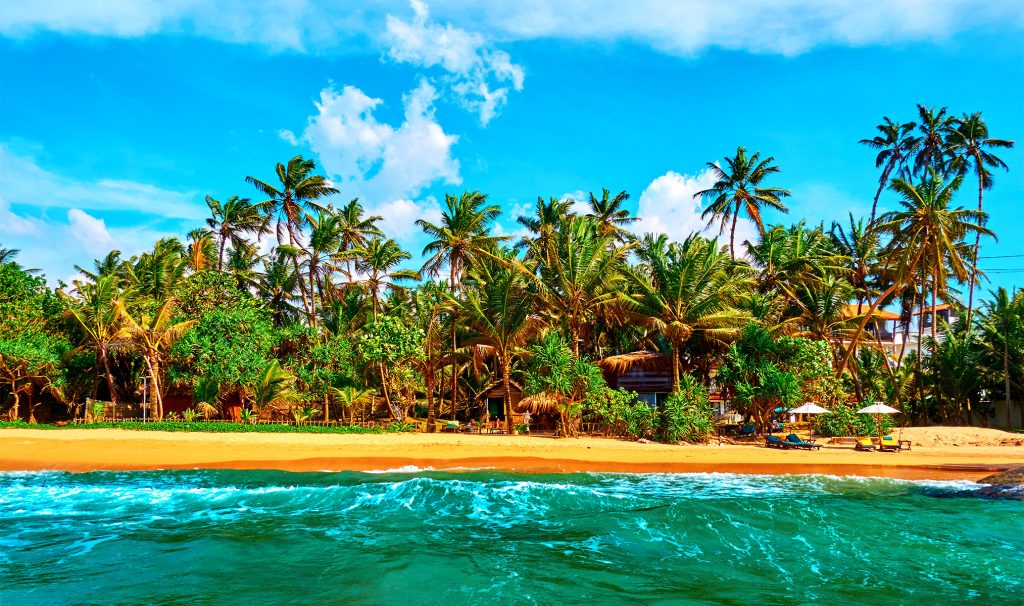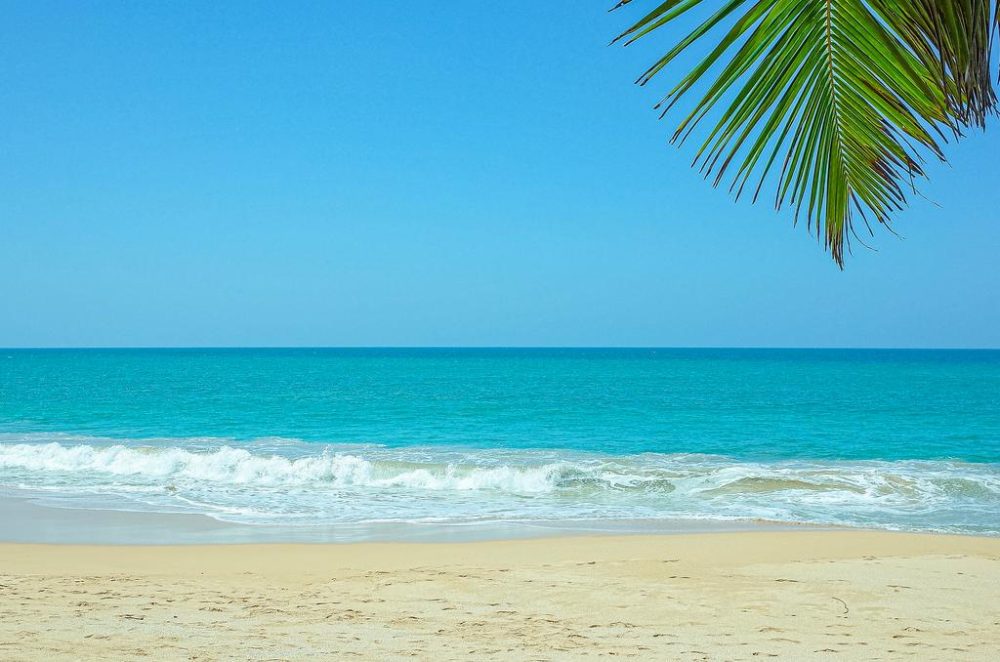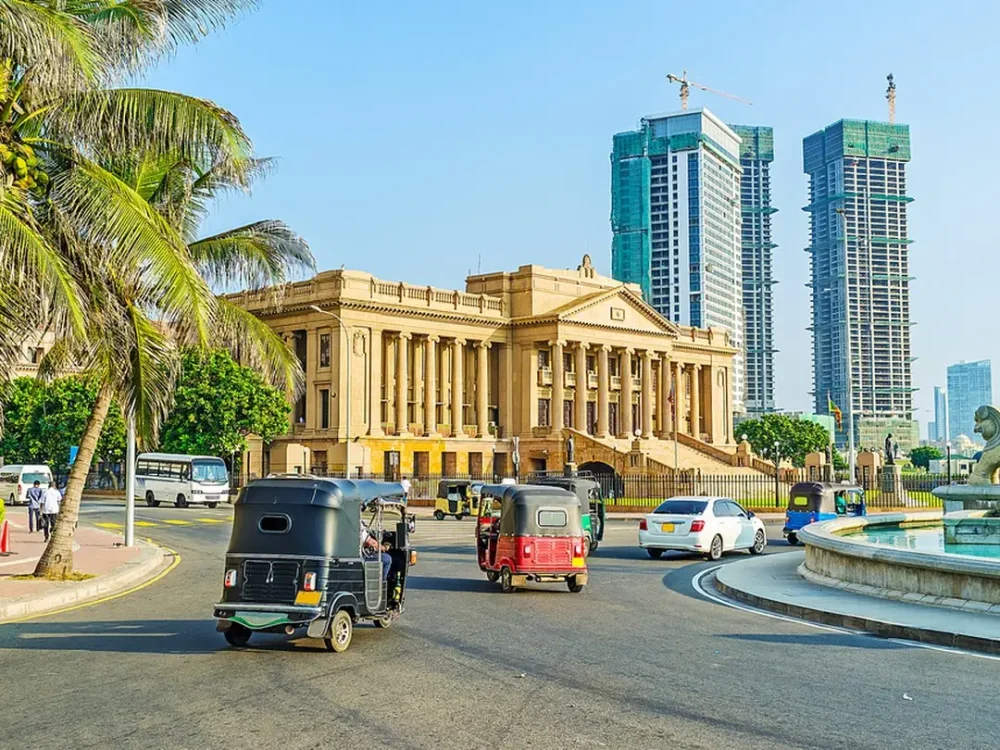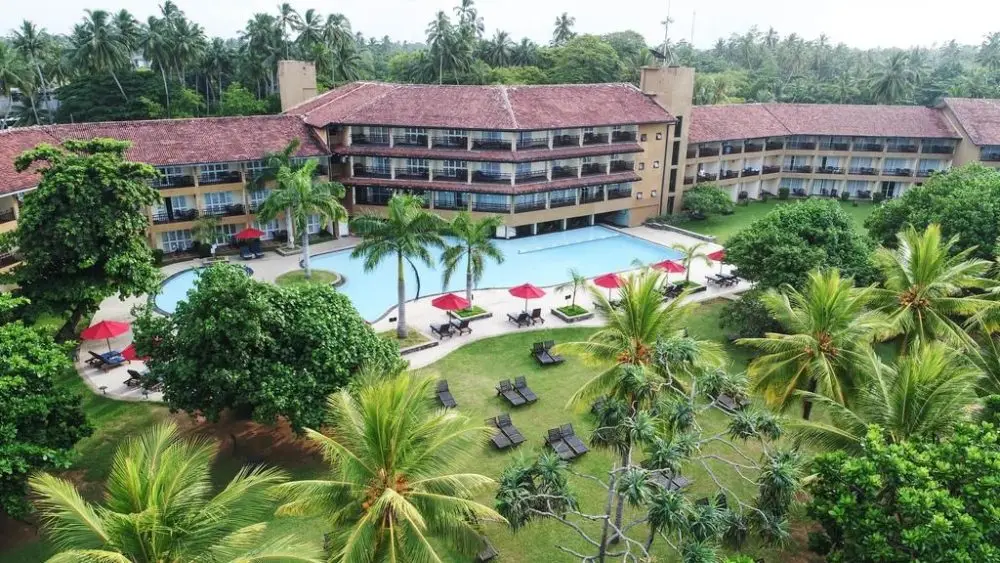Sri Lanka is a picturesque landscape of white sand and coconut palms, and is also an ideal destination for those looking for a relaxing beach holiday. While many of the island’s resorts attract surfers with powerful waves, there are many secluded coves and bays that are quiet and peaceful.
In this article, we have compiled the best wave-free beaches in Sri Lanka where you can enjoy gentle seas, safe swimming and serene time at the water’s edge. Here you will find ideal places for relaxation, family holidays and comfortable swimming where you don’t have to worry about undercurrents and high waves.

Natural bays and coral reefs
The southern coast of Sri Lanka is famous for its picturesque bays and cosy lagoons, safely sheltered from the ocean waves. Coral reefs and rock formations are natural barriers that create conditions for comfortable bathing and relaxing holidays. Let’s take a look at the most famous beaches of the south coast:
- Mirissa is a picturesque beach on the southern part of the island. It is a semicircle where the water is almost always calm thanks to the headlands surrounding the bay. The clean, soft sand and easy access to the sea make it a great place for swimming. The infrastructure is well-developed: there are cafes, restaurants, sunbed rentals and water activities nearby.
- Tangalle is a paradise for those who prefer a secluded holiday. The beach stretches along the coastline, with some areas protected from the waves by coral reefs. The water is clean, clear and perfect for snorkelling. There are fewer tourists than on other popular beaches, allowing you to enjoy a peaceful atmosphere.
- Hikkaduwa is a famous destination not only for lovers of relaxing holidays, but also for scuba diving enthusiasts. Thanks to the system of reefs located close to the shore, the beach has turned into a natural lagoon. The water is clear and the waves are virtually non-existent. This makes it an excellent snorkelling and diving spot.
Comfort and convenience on Sri Lanka’s best wave-free beaches
 The western coast of Sri Lanka has a developed infrastructure and is suitable for family holidays. It has a calmer sea, soft sand and a large number of hotels with a good level of service. Popular beaches of the west coast:
The western coast of Sri Lanka has a developed infrastructure and is suitable for family holidays. It has a calmer sea, soft sand and a large number of hotels with a good level of service. Popular beaches of the west coast:
- Bentota is a comfortable beach on the island. It is characterised by a wide shoreline, a smooth entry into the water and virtually no waves. This makes it an excellent holiday destination for children. There are many hotels, restaurants, as well as water entertainment centres.
- Unawatuna is a popular bay with azure waters protected by natural reefs. Unlike other resorts, high waves are rare and the place is surrounded by green hills. It attracts lovers of beach relaxation, as well as those who appreciate comfortable conditions for swimming and snorkelling.
Top 5 best wave-free beaches in Sri Lanka
The state is known for its rich selection of beaches, but not all of them are suitable for those looking for calm seas and a relaxed atmosphere. If a holiday without high waves is the goal, it is important to choose places protected by natural barriers such as reefs, cliffs or headlands. Below are five of the best beaches where you can enjoy the sea without worrying about high waves:
- Bentota. A wide sandy beach in Sri Lanka with a comfortable entrance to the water, ideal for family holidays. In these waters there are no underwater currents and large waves, and the developed infrastructure makes the stay comfortable. Along the coast there are modern hotels with high-class service, and nearby are water entertainment centres and nature reserves.
- Mirissa. The beach is a small crescent-shaped bay surrounded by rocks that protect from strong waves. The atmosphere is calm and the water is always clear and warm. Mirissa is famous for its magical sunsets, and during the season you can go on excursions and see whales.
- Unawatuna. The island’s picturesque coastline is surrounded by green hills and coconut groves. Thanks to the coral reef that protects the shore from waves, the water here remains almost still, creating optimum swimming conditions. The coastal area is perfect for those who want to enjoy their holiday moments in a relaxing environment and appreciate the beauty of nature.
- Hikkaduwa. Apart from the calm sea, the resort offers a rare opportunity to watch sea turtles and coral reefs right off the shore. It is one of the best snorkelling destinations in Sri Lanka, where you can see a variety of marine life. The water is crystal clear and the beach infrastructure includes many cafes, restaurants and equipment hire outlets.
- Tangalle. The beach is suitable for those who want to avoid the noisy tourist spots. It is attractive with soft sand, turquoise water and no strong waves. There are fewer hotels and cafes here, making it a great option for a quiet holiday. Some parts of the beach are protected by reefs, creating safe lagoons for swimming.
How to choose a beach for a holiday with your family
When choosing a family holiday destination in Sri Lanka, it is important to consider several aspects:
- Safety: beaches with a gentle entrance to the water, no underwater currents and reefs, minimum depth in shallow water.
- Infrastructure: availability of hotels, cafes, restaurants, recreation areas, children’s playgrounds, possibility to rent sun beds.
- Availability of shade: natural vegetation or sun umbrellas that can be rented.
- Children’s activities: water rides, snorkelling, ocean turtle watching or excursions.
- The best time to go on holiday is December to April, when the sea is the calmest and there is virtually no rainfall.
- Recommended beaches for holidays with children: Bentota, Unawatuna, Mirissa – due to the smooth entrance to the water and developed infrastructure.
Where to find beaches for waves
Sri Lanka is famous not only for its secluded beaches, but also for places with great waves that attract surfers from all over the world. For those looking for thrill and excitement, the following locations are perfect:

- Arugam Bay is an iconic spot for surfers. The waves here are powerful and suitable for experienced riders and beginners alike. One of the best surf spots in Asia.
- Veligama is the optimal choice for beginner surfers. It has a wide coastline, gradual wave building and the opportunity to learn in surf schools.
- Hikkaduwa (certain areas) – unlike the calm lagoon, there are areas with great waves to ride nearby.
Conclusion
 To make your holiday in Sri Lanka a memorable experience, plan your itinerary carefully. Take into account the time of year, coastal areas and personal preferences. A trip to the picturesque lagoons of Bentota, the secluded shores of Mirissa, the crystal clear waters of Unawatuna, the calm bays of Hikkaduwa or the serene beaches of Tangalle will be the perfect escape from the hustle and bustle.
To make your holiday in Sri Lanka a memorable experience, plan your itinerary carefully. Take into account the time of year, coastal areas and personal preferences. A trip to the picturesque lagoons of Bentota, the secluded shores of Mirissa, the crystal clear waters of Unawatuna, the calm bays of Hikkaduwa or the serene beaches of Tangalle will be the perfect escape from the hustle and bustle.
 en
en  ru
ru  de
de  nl
nl  ar
ar  es
es  fr
fr  hi
hi  it
it  pt
pt  el
el 











